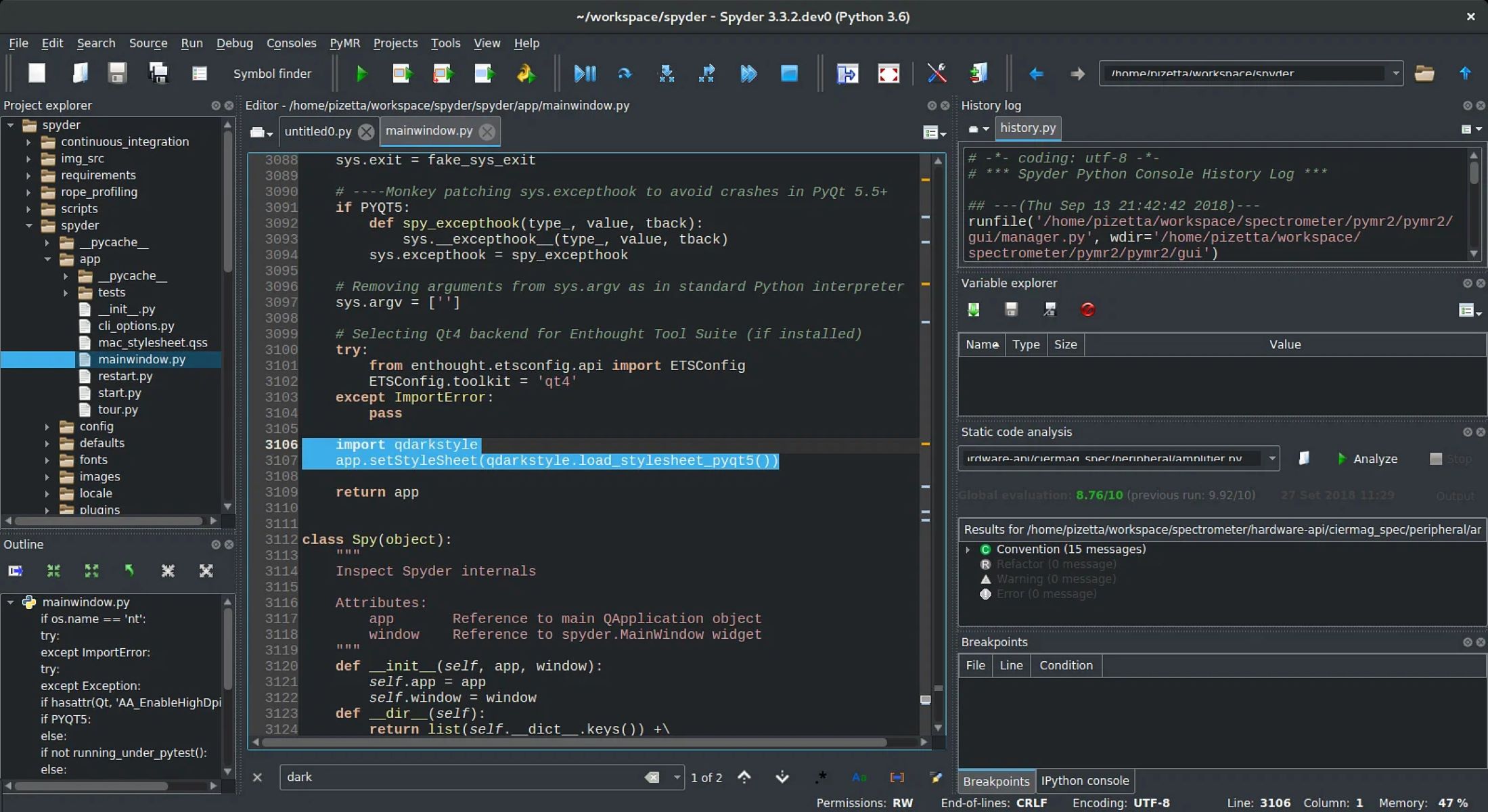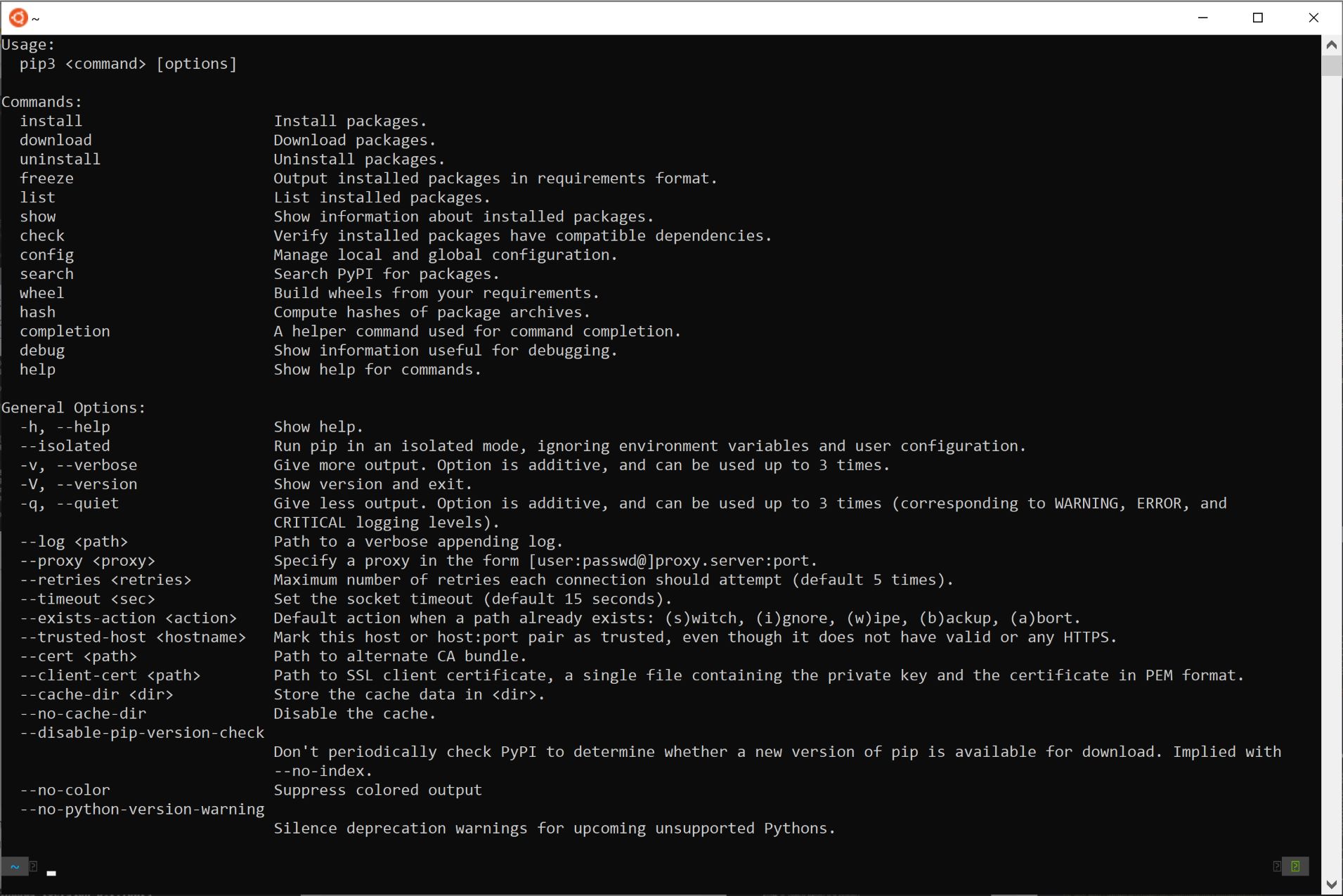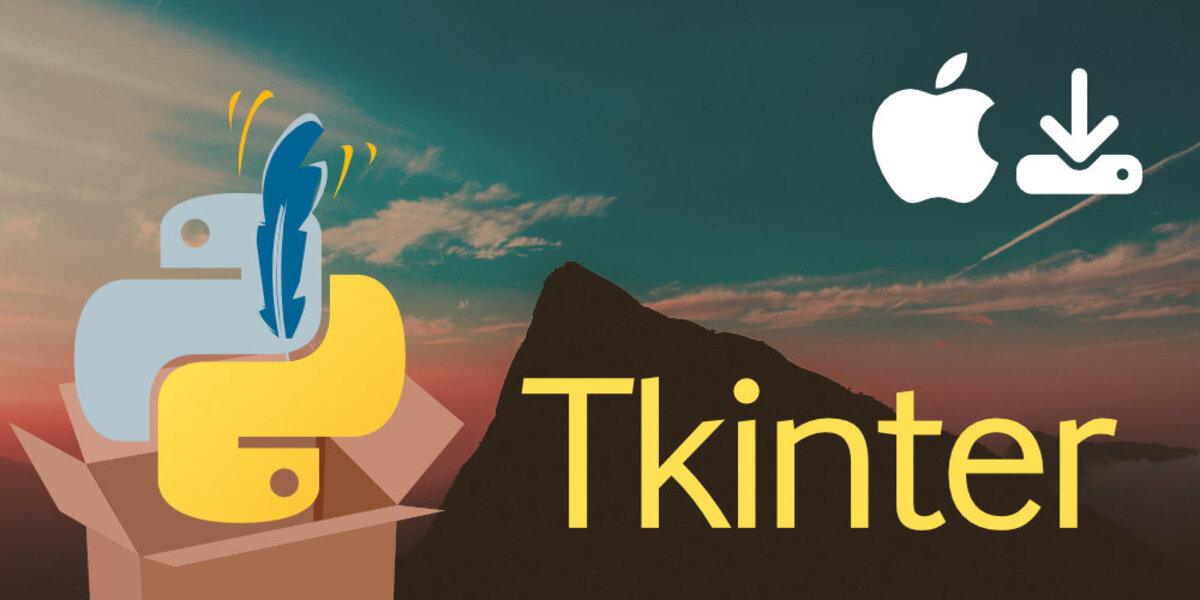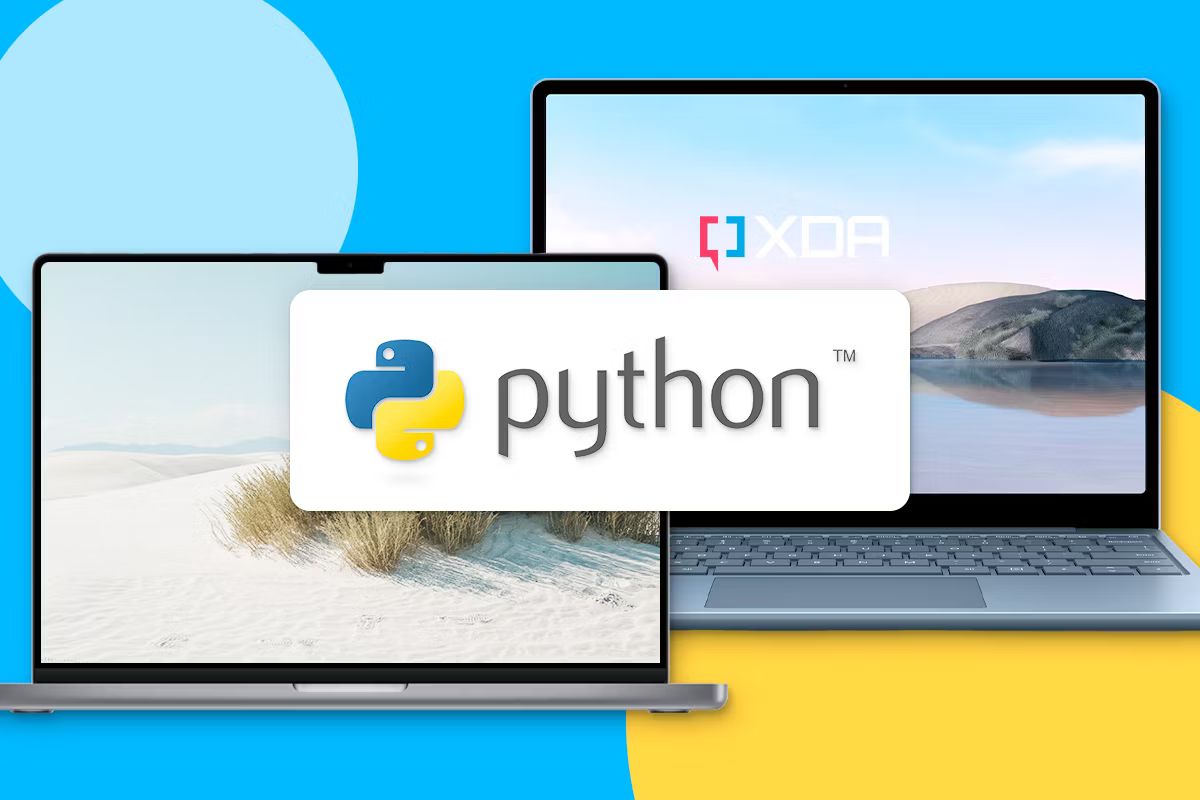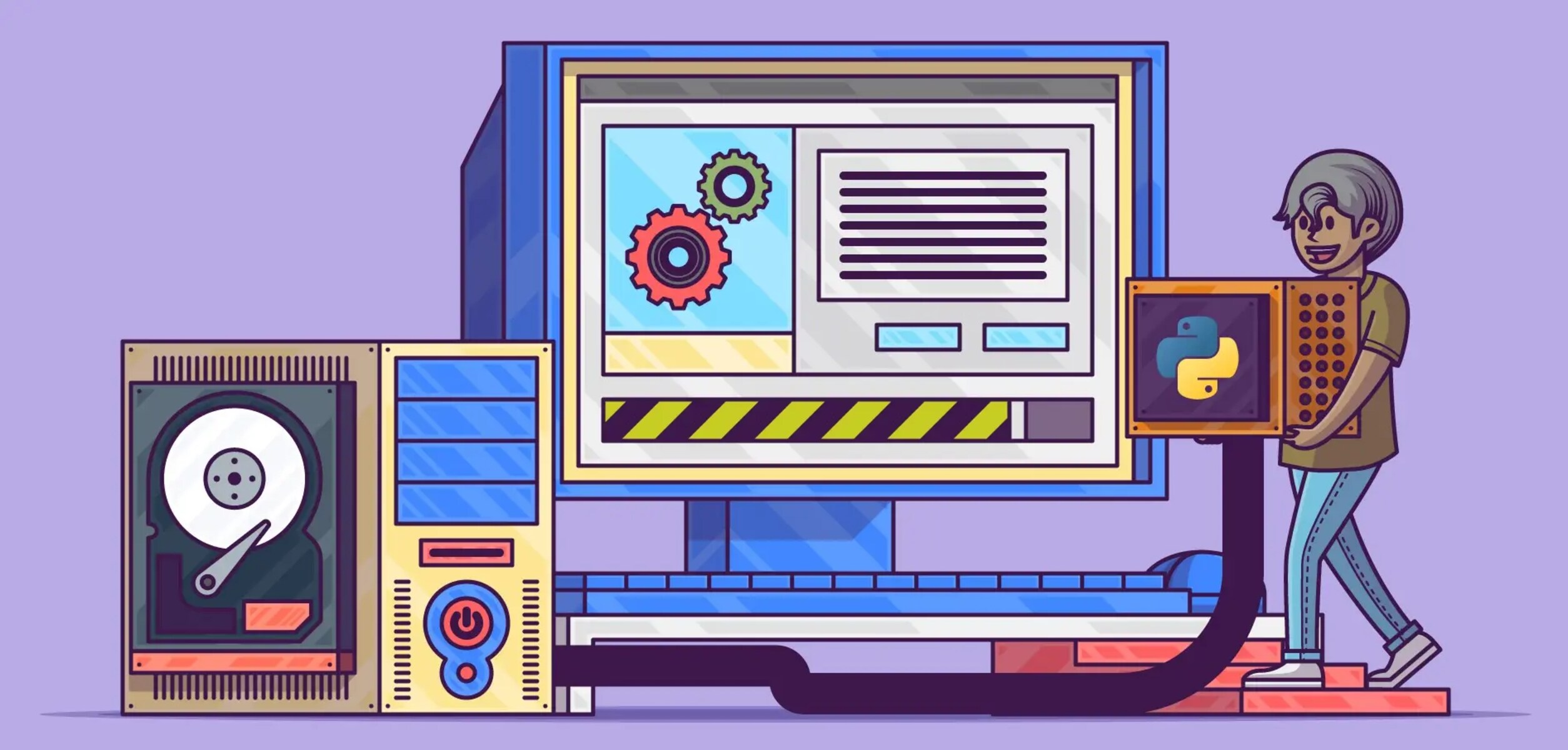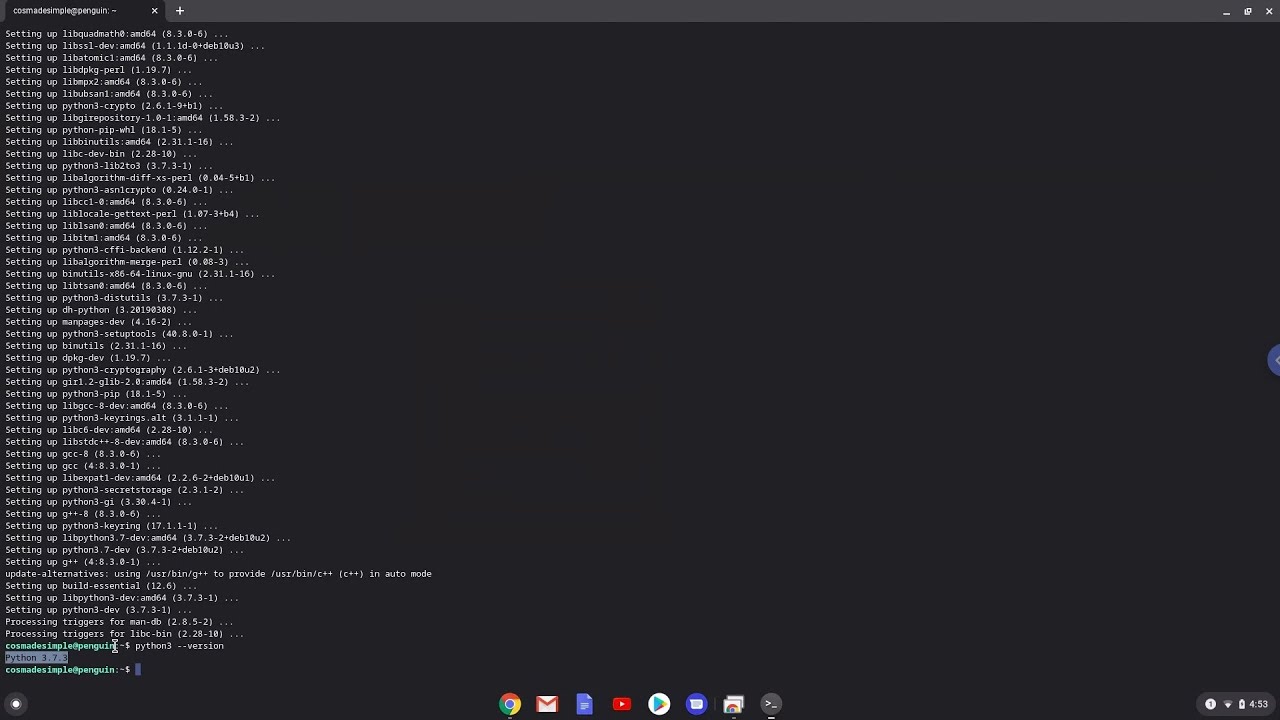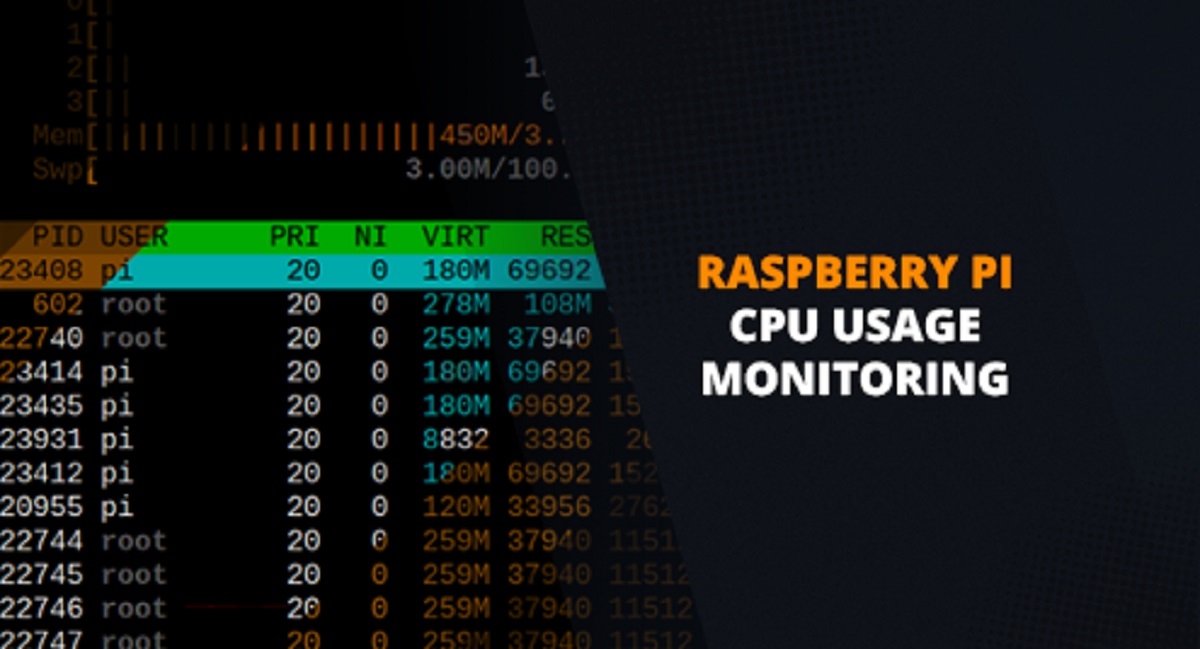Introduction
Python is a versatile programming language that has gained immense popularity due to its simplicity and flexibility. With its easy-to-read syntax and vast array of libraries and tools, Python has become a go-to language for beginners and experienced developers alike. Whether you are a student, a data scientist, a web developer, or just someone interested in learning a new skill, Python can be a valuable language to add to your repertoire.
In this article, we will explore how to use Python on the Windows operating system. Windows provides a user-friendly environment for programming and offers various tools and resources to support Python development. We will cover the installation process, getting started with the Python interpreter, running Python scripts, working with Python packages, and suggest some popular Integrated Development Environments (IDEs) that can enhance your Python coding experience on Windows.
By the end of this article, you will have a solid understanding of how to set up and utilize Python on Windows, allowing you to harness the power of this dynamic programming language for your projects and tasks.
So, whether you are a Windows user looking to dive into the world of Python programming, or you are already familiar with Python and want to explore its functionality on the Windows platform, let’s get started and unlock the potential of Python within the Windows environment.
Installing Python on Windows
Before you can start using Python on your Windows machine, you need to install it first. The process is straightforward and can be completed in a few simple steps.
1. Visit the official Python website at python.org to download the latest version of Python for Windows. Make sure to choose the appropriate version based on your system architecture (32-bit or 64-bit).
2. Once the download is complete, locate the installer file and double-click on it to start the installation process. The installer will guide you through the setup, allowing you to customize the installation options if desired. Make sure to check the box that says “Add Python to PATH” in order to easily run Python from the command line.
3. Follow the prompts and accept the license agreement to proceed with the installation. You can choose the destination folder for the installation, or simply accept the default location.
4. After the installation is complete, you can verify if Python is successfully installed by opening the Command Prompt and typing “python” followed by the Enter key. If Python is installed correctly, you will see the Python version number and the Python prompt (“>>>”) indicating that you are ready to start coding.
That’s it! You have successfully installed Python on your Windows machine. Now you can move on to the next section to learn how to get started with Python on Windows.
Getting Started with Python on Windows
Now that you have Python installed on your Windows machine, it’s time to familiarize yourself with the basics and get started with coding in Python.
1. Python Interpreter: The Python interpreter is a command-line interface that allows you to interact with Python directly. To start the Python interpreter, open the Command Prompt and type “python” followed by the Enter key. You will see the Python version and the Python prompt (“>>>”) indicating that you can start executing Python code.
2. Writing Your First Python Program: To write a Python program, you can use any text editor such as Notepad or a dedicated code editor like Visual Studio Code. Open your preferred text editor, create a new file, and save it with a .py extension. You can now write and save your Python code in this file. For example, you can write a simple program like:
python
print(“Hello, Python!”)
Save the file and exit the text editor. To run the Python program, open the Command Prompt, navigate to the directory where you saved the file, and type “python filename.py” followed by the Enter key. The program will execute, and you will see the output displayed in the Command Prompt.
3. Learning Python Syntax: Python has a straightforward syntax that is easy to read and understand. Take some time to familiarize yourself with the basic Python syntax, including variables, data types, control flow statements (if-else, for loop, while loop), functions, and modules. There are numerous online resources and tutorials available that can help you grasp the fundamentals of Python programming.
4. Experimenting with Python Features: Python offers a vast array of features and libraries that you can leverage for various purposes. Explore different functionalities such as file manipulation, string operations, mathematical calculations, data visualization, or web development using Python libraries and frameworks such as NumPy, pandas, matplotlib, Flask, and Django. The Python documentation and online tutorials can guide you in implementing these features and exploring the full potential of Python.
By following these steps and exploring the world of Python, you have taken your first steps towards becoming proficient in Python programming on your Windows machine. Now, let’s move on to the next section to learn how to run Python scripts on Windows.
Using the Python Interpreter on Windows
The Python interpreter is a powerful tool that allows you to execute Python code interactively. It enables you to test your code, experiment with different functionalities, and quickly get feedback on the output. Here are some essential tips for using the Python interpreter on Windows:
1. Opening the Python Interpreter: To open the Python interpreter, open the Command Prompt and type “python” followed by the Enter key. This will launch the Python interpreter, and you will see the Python version and the Python prompt (“>>>”) indicating that you can start typing Python commands.
2. Executing Python Statements: You can execute Python statements directly in the interpreter. For example, you can type simple arithmetic operations, define variables, and print out their values. The interpreter will execute each statement immediately and display the output.
3. Using Help: The Python interpreter provides a built-in help system that allows you to access information about Python objects, functions, and modules. To access the help system, type “help()” and press Enter. This will open the interactive help console where you can search for specific topics and get detailed documentation.
4. Exiting the Interpreter: To exit the Python interpreter, simply type “exit()” or press Ctrl + Z followed by Enter. This will close the interpreter and return you to the Command Prompt.
5. Multi-Line Statements: The Python interpreter allows you to write multi-line statements using the backslash (\) character. This is useful when writing longer blocks of code or defining functions and classes. You can also use parentheses or square brackets to wrap multiple lines without the need for the backslash.
6. Using Tab Completion: The Python interpreter supports tab completion, which can save you time and reduce errors. When typing a command or referencing an object, press the Tab key, and the interpreter will suggest completions based on the available options.
The Python interpreter is a valuable tool for testing and experimenting with Python code. It provides a quick and interactive way to validate your code logic, troubleshoot any issues, and explore the functionality of Python modules and libraries. As you become more comfortable with the interpreter, you will find it to be an essential component of your Python development workflow.
Running Python Scripts on Windows
Running Python scripts is an essential part of Python programming on Windows. Scripts allow you to execute a series of Python commands and automate tasks. Here’s how you can run Python scripts on Windows:
1. Create a Python Script: To create a Python script, open your preferred text editor or IDE and write your code. Save the file with a .py extension. You can include any valid Python code in your script, including importing libraries, defining functions, and executing statements.
2. Using the Command Prompt: To run a Python script from the Command Prompt, open the Command Prompt and navigate to the directory where your script is located using the “cd” command. Once you are in the correct directory, type “python script_name.py” and press Enter. The Python interpreter will execute the script, and you will see the output displayed in the Command Prompt.
3. Running Scripts with Arguments: You can pass arguments to your Python script by adding them after the script name in the Command Prompt. For example, if your script accepts a parameter called “name”, you can run the script with the command “python script_name.py John” to pass “John” as the value of the “name” parameter.
4. Executing Scripts in an IDE: If you prefer using an Integrated Development Environment (IDE) for Python development, you can run your script directly from the IDE. IDEs like Visual Studio Code, PyCharm, and Spyder provide a built-in terminal or run option that allows you to execute your Python script with a single click.
5. Building Standalone Executables: If you want to distribute your Python script as an executable file that can be run without the need for the Python interpreter, you can use tools like PyInstaller or cx_Freeze. These tools package your Python script along with the necessary dependencies and create a standalone executable file that can be run on Windows machines without the need to install Python separately.
Running Python scripts on Windows opens up endless possibilities for automation and task execution. Whether you want to perform data processing, web scraping, or any other task, running Python scripts allows you to leverage the power of Python to automate these processes and make your workflow more efficient.
Working with Python Packages on Windows
Python packages are collections of modules that extend the functionality of the Python programming language. These packages are crucial for many tasks and projects, such as data analysis, web development, scientific computing, and machine learning. Here’s how you can work with Python packages on Windows:
1. Installing Packages: To install Python packages on Windows, you can use the package manager called pip, which comes pre-installed with Python. Open the Command Prompt and type “pip install package_name” followed by the Enter key. Pip will download and install the specified package along with its dependencies. You can install multiple packages in one command by separating them with spaces.
2. Managing Packages: Once you have installed some packages, you can manage them using pip. Use “pip list” to view the installed packages and their versions. To upgrade a package to the latest version, use “pip install –upgrade package_name”. To uninstall a package, use “pip uninstall package_name”. You can find detailed documentation on pip and package management on the Python website.
3. Virtual Environments: Virtual environments allow you to create isolated Python environments with their own set of packages. This means you can have different versions of packages for different projects without conflict. To create a virtual environment, open the Command Prompt and type “python -m venv env_name” followed by the Enter key. Activate the virtual environment using the command “env_name\Scripts\activate”. You will see the environment name in parentheses in your Command Prompt, indicating that you are now working within the virtual environment. Install packages within the virtual environment using pip, and they will be isolated from your system’s global Python installation.
4. Exploring Package Documentation: Most Python packages provide documentation to help you understand their functionality and how to use them. You can usually find the documentation on the package’s official website or on the Python Package Index (PyPI). Reading the documentation will give you insights into the package’s features, available functions, and examples of usage.
Working with Python packages on Windows allows you to leverage the vast ecosystem of available libraries and modules. By installing and managing packages, you can extend Python’s capabilities, simplify complex tasks, and accelerate your development process. Whether you need to manipulate data, build web applications, or perform advanced mathematical computations, Python packages provide the tools you need to get the job done.
Integrated Development Environments (IDEs) for Python on Windows
An Integrated Development Environment (IDE) is a software application that provides tools and features to facilitate the development of code. IDEs offer features like code editing, debugging, syntax highlighting, code completion, and project management, making them essential for efficient and productive Python development. Here are some popular IDEs for Python on Windows:
1. Visual Studio Code: Visual Studio Code (VS Code) is a lightweight yet powerful IDE developed by Microsoft. It offers excellent support for Python development through its numerous extensions, such as Python, PyLint, and IntelliSense. VS Code provides a clean and customizable interface, making it a popular choice among Python developers. Additionally, it includes a built-in terminal for running Python scripts.
2. PyCharm: PyCharm is a comprehensive IDE specifically designed for Python development. It offers a range of features including code analysis, refactoring, debugging, and version control integration. PyCharm provides intelligent code completion, dedicated project templates, and compatibility with various frameworks like Django and Flask, making it a robust choice for professional Python developers.
3. Spyder: Spyder is an open-source IDE tailored for scientific computing and data analysis in Python. It comes with built-in support for popular scientific libraries like NumPy and Pandas. Spyder offers features for interactive exploration, debugging, and variable inspection, making it a great choice for data scientists and researchers working with Python.
4. Jupyter Notebook: Jupyter Notebook is an open-source web-based IDE that allows you to create and share documents containing live code, equations, visualizations, and narrative text. It supports various programming languages, including Python. Jupyter Notebook provides a dynamic environment for data analysis, research, and interactive experimentation.
5. IDLE: IDLE is the default IDE that comes bundled with the Python installation. It provides a simple and user-friendly interface for Python development. While it may not have as many advanced features as other IDEs, IDLE is lightweight and easy to use, making it suitable for beginners and those looking for a minimalistic coding environment.
Each IDE has its own unique features and advantages. The choice of IDE will depend on your specific requirements, level of expertise, and personal preference. It’s important to explore different IDEs and find the one that best suits your needs.
By working with these IDEs on Windows, you can benefit from their powerful features and streamline your Python development workflow. Whether you are a beginner or an experienced Python programmer, using an IDE can greatly enhance your productivity and make the coding experience more enjoyable.
Conclusion
Python provides a robust and versatile platform for programming on Windows. Whether you are a beginner or an experienced developer, utilizing Python on Windows opens up a world of possibilities for creating applications, analyzing data, building web services, and much more.
In this article, we explored the process of installing Python on Windows and getting started with Python programming. We learned how to use the Python interpreter, run Python scripts, work with Python packages, and discussed popular IDEs for Python development on Windows.
With Python, you have access to a vast collection of libraries and tools that can streamline your development workflow and enhance your productivity. Whether you’re working on a personal project, collaborating with others, or pursuing a career in programming, Python on Windows provides the flexibility and resources you need.
Remember to keep exploring and learning new concepts in Python. The Python ecosystem is constantly evolving, with new libraries and frameworks being developed all the time. Stay up to date with the latest trends and updates in the Python community to maximize your proficiency and stay ahead in your Python development journey.
Now armed with the knowledge of how to use Python effectively on Windows, you can embark on your coding adventures. Whether you’re building a web application, automating tasks, analyzing data, or pushing the boundaries of what’s possible with Python, the Windows operating system provides a stable and supportive environment for your Python development.
So, start coding, keep experimenting, and unlock the full potential of Python on Windows!







